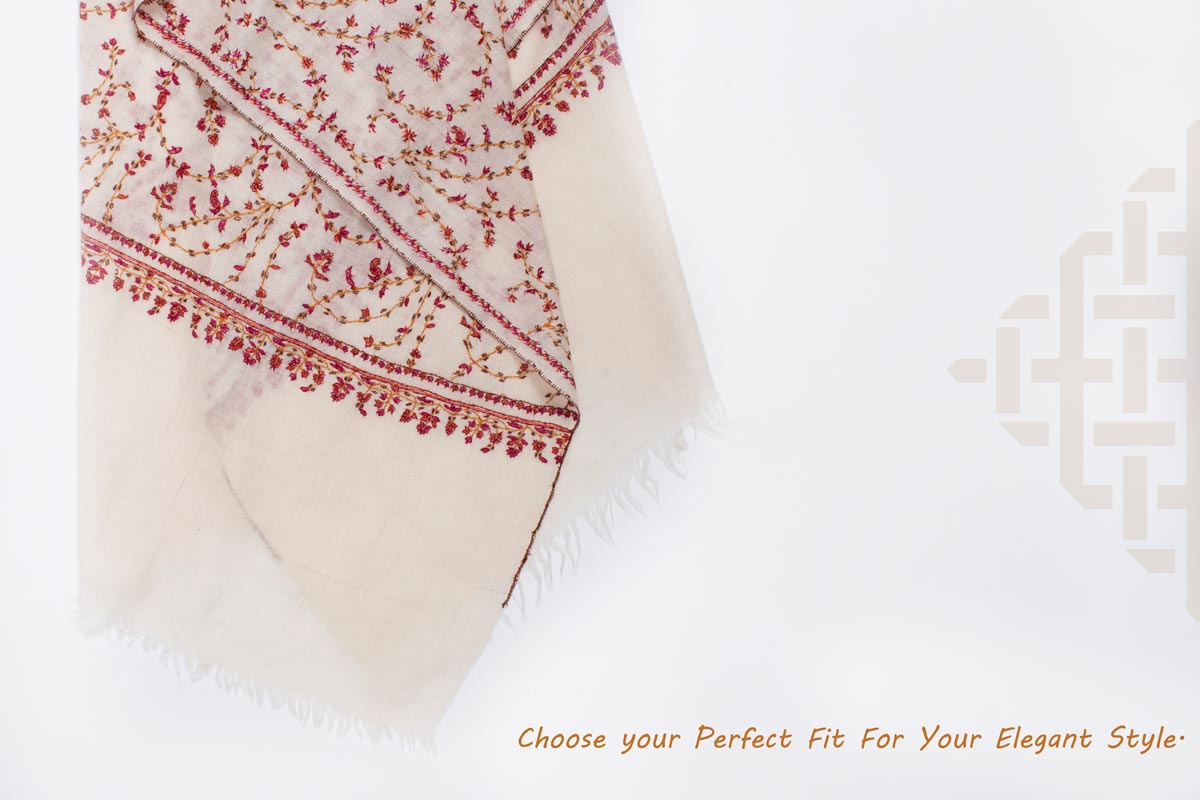
Shahtoosh: The Opulent Elegance of the World's Most Expensive Fabric
When it comes to luxury fabrics, one stands above all others in terms of exclusivity and allure: Shahtoosh. Derived from the underfur of the rare chiru antelope found in the Tibetan plateau, Shahtoosh fabric has captivated the world with its unmatched softness, delicacy, and warmth. With a price tag that reflects its scarcity and exceptional qualities, Shahtoosh remains the epitome of opulence in the realm of textiles. In this article, we will delve into the origins, characteristics, controversies, and desirability of Shahtoosh.
The Origins of Shahtoosh:
Shahtoosh, which translates to "king of wools" in Persian, has a rich history intertwined with the traditions and culture of the region. Skilled artisans from the Kashmir valley in India and neighboring regions meticulously hand-weave Shahtoosh shawls, infusing each piece with a unique blend of artistry and craftsmanship.
Unmatched Softness and Delicacy:
What sets Shahtoosh apart is its extraordinary softness, attributed to the incredibly low micron count of the chiru's underfur. With a micron range between 9 and 11, Shahtoosh is among the finest natural fibers ever discovered. The shawls made from this fabric are so lightweight that they can effortlessly pass through a wedding ring, a testament to their exquisite fineness. When draped over the shoulders, shahtoosh shawls offer unparalleled warmth and comfort, making them highly coveted among luxury connoisseurs.
Controversies and Conservation Concerns:
While Shahtoosh has long been associated with luxury and prestige, it has also been mired in controversy. The chiru antelope, once abundant across the Tibetan plateau, has faced significant population decline due to unregulated hunting and poaching for its prized underfur. The illegal trade in Shahtoosh products poses a severe threat to the chiru's survival, leading to global efforts to protect the species and ban the production and trade of Shahtoosh.
Legislation and Ban:
Recognizing the urgency of conserving the chiru antelope, governments and international bodies have implemented strict regulations and imposed ban on Shahtoosh. These measures aim to safeguard the endangered species and discourage the illegal hunting and trafficking of its underfur. Possessing or selling Shahtoosh products is considered a criminal offense in many countries, reinforcing the commitment to protect the chiru and promote ethical practices within the fashion industry.
Seeking Ethical Alternatives:
The ban on Shahtoosh has prompted fashion designers and manufacturers to seek ethical alternatives that replicate its luxurious qualities. Artistic Pashmina stands as a popular substitute, offering a level of softness and warmth that is comparable to other luxurious fabrics, all while upholding sustainable and responsible sourcing practices. These alternatives allow consumers to enjoy the indulgence of luxury fabrics without contributing to the harm caused by the illicit trade in Shahtoosh.
Preserving a Legacy:
As we contemplate the future of Shahtoosh, it is crucial to recognize the significance of preserving not only the chiru antelope but also the cultural heritage associated with this fabric. Efforts are being made to raise awareness, promote conservation initiatives, and provide sustainable livelihoods for local communities. By supporting ethical fashion choices and embracing alternatives like Shahkaar Natural Ivory Pashmina, we not only elevate our style but also play a significant role in the conservation of wildlife and the preservation of traditional craftsmanship.
Shahtoosh fabric stands as an embodiment of luxury, with its unmatched softness, delicacy, and warmth. However, its desirability is accompanied by controversies surrounding the endangered chiru antelope and the illegal trade in its underfur. As we navigate the complexities surrounding Shahtoosh, let us prioritize the preservation of species, support ethical alternatives, and celebrate the rich cultural heritage associated with these remarkable fabrics. In doing so, we can redefine luxury to align with sustainability and contribute to a more responsible and compassionate fashion industry.






Leave a comment
This site is protected by hCaptcha and the hCaptcha Privacy Policy and Terms of Service apply.